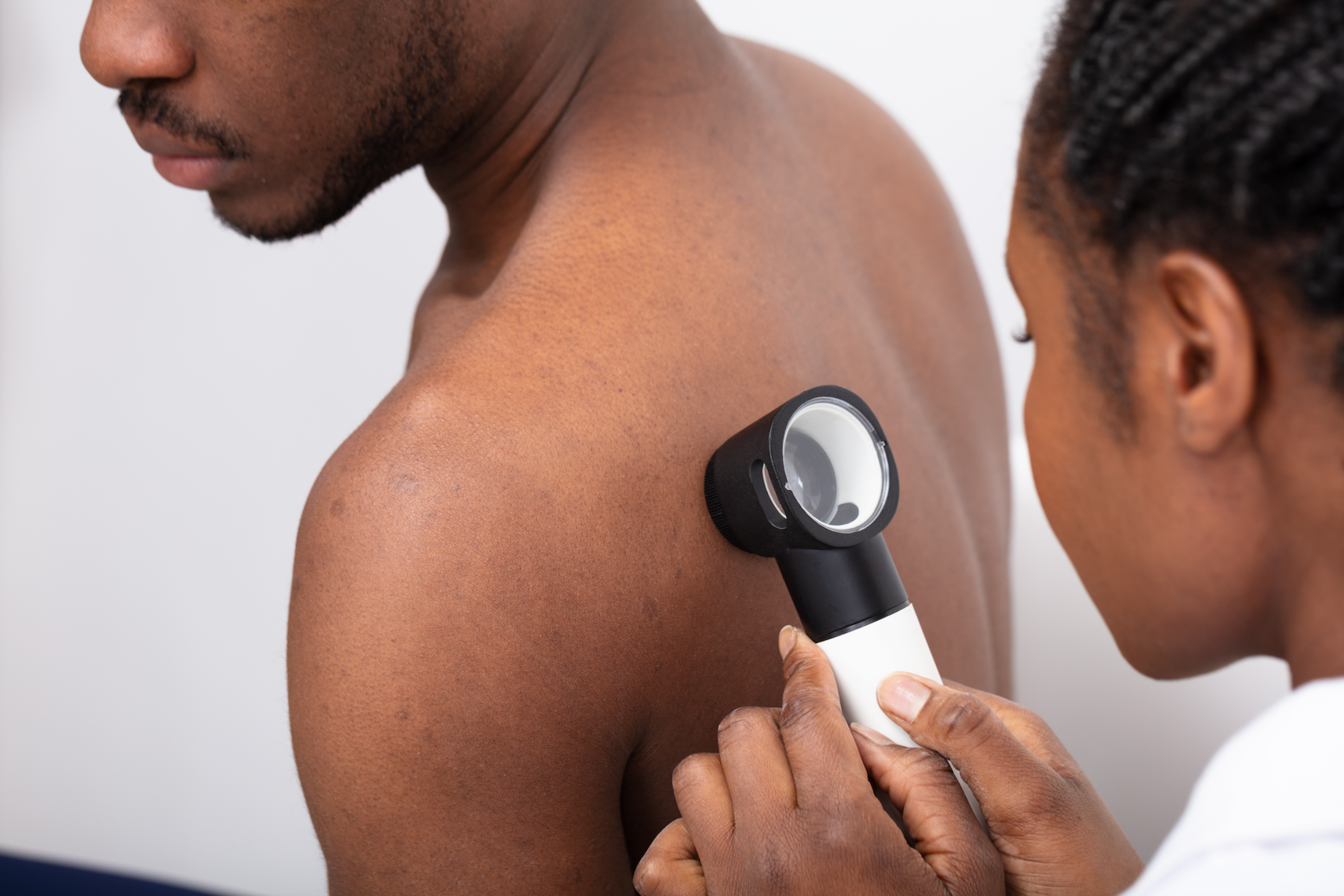May is Skin Cancer Awareness Month, and here at Rejuvaskin, we love talking about all things “skin.” We want you to have the healthiest, most radiant skin possible! Today, we’re going to take a look at what to look for in a skin self-exam, and answer a couple of common questions about skin cancer: what does skin cancer look like, and what are the ABCDEs of melanoma. Let’s dive right in and learn some more about skin cancer detection.
What Does Skin Cancer Look Like?
In order to keep an eye out for something, you sort of have to know what it looks like, right? Let’s take a look at some of the physical signs of skin cancer. Luckily, there’s a super-helpful acronym to help us remember some of the warning signs of skin cancer. And, keep in mind that there are several different types of skin cancer. So, what are the ABCDEs of melanoma (skin cancer)?
| (A) Asymmetry | Imagine drawing a line through the middle of the skin spot in question. If it is the same on both sides (or very close), it’s likely just a mole or freckle. |
| (B) Border | If the border of your spot in question is jagged or blurry, you might be looking at skin cancer. |
| (C) Color | Normal colors for moles and freckles are varying shades of your natural skin color. However, if you see purples, reds (aside from birthmarks), or a combination of these colors, get the spot checked out. |
| (D) Diameter | If your spot is larger than ¼ inch in diameter, you definitely want to get it checked out. |
| (E) Evolution | Moles, freckles, and birthmarks won't change significantly throughout your life, but a spot of skin cancer will. If you notice new growth or changes in the appearance of the spot, contact your doctor. |
How Do I Do A Skin Health Check At Home?
Now that we know what to look for in a skin self-exam, let’s talk about how to actually do one! Here are the steps for performing a skin check at home – remember that it’s important to have a dermatologist or your primary care physician check your skin regularly, too. Healthcare professionals have professional training and experience with skin conditions like melanoma.
Step 1: Full Body Check
First, find a tall mirror that will help you see your whole body, then undress so that you can see everything clearly. Make sure you have plenty of light. As you check the skin over your whole body, make sure to be thorough – it’s in your best interest!
Check your chest, face, neck, stomach, and ears. Make sure to lift up your breasts and any areas of loose skin, just like when you take a shower or bath. Then, check out your arms, upper, lower, and even your armpits.
Step 2: Check The Sneaky Spots
Also make sure to check your hands, even though you see them and use them frequently. Do the same with your feet and legs, making sure to check for spots thoroughly. Don’t forget the genital and buttock area – skin cancer can be sneaky!
Check your back, the back of your neck, and even your scalp – you probably see where this is going. Check every square inch of your skin so that you can say you did a complete skin check.
Step 3: Take Action
If you find anything concerning, use the ABCDEs; if it’s unclear whether you should be concerned or not, set up an appointment with your doctor and keep an eye on the spot until then.
Why Should I Do Skin Health Checks?
We know that standing naked in front of the mirror is probably not everyone’s idea of a fun time, but keeping an eye on our skin is incredibly important. The more familiar we are with our bodies, the easier it will be to catch issues and potential skin cancer scares. After all, early detection saves lives!





















Leave a comment